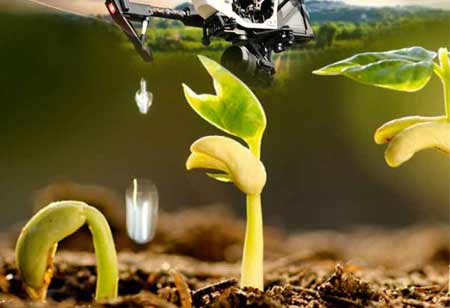Thank you for Subscribing to Agri Business Review Weekly Brief
The Internet of Things: Understanding nature
Many people consider the natural world as being infinitely unsolvable, meaning we'll never be able to understand precisely how the world works at any level of analysis or observation.

By
Agri Business Review | Tuesday, December 20, 2022
Stay ahead of the industry with exclusive feature stories on the top companies, expert insights and the latest news delivered straight to your inbox. Subscribe today.
While many general technologies positively influence the environment, the Internet of Things (IoT) is taking massive strides in understanding nature at the micro and macro levels.
FREMONT, CA: Many people consider the natural world as being infinitely unsolvable, meaning we'll never be able to understand precisely how the world works at any level of analysis or observation. We don't completely understand how gravity works or what makes up the materials that compose matter. But while much of the natural world evokes mystery, there's a lot we do understand.
With the emergence of advanced computer technology, our capacity to monitor, predict, and further comprehend the world has enhanced drastically in the last several decades. For instance, technologies like the Internet of Things have bolstered human relationships with the natural world.
Modern-day conservation technology
Technology is reshaping our understanding of the natural world in ways that would motivate the Muirs, Roosevelts, Carsons, and Cousteaus of the world. Consider the term "conservation technologist ": evidence of technology's success and positive impact on conservation efforts over the last half a century. While many general technologies positively influence the environment, the Internet of Things (IoT) is taking massive strides in understanding nature at the micro and macro levels.
IoT-enabled animal tracking
IoT-enabled animal tracking technologies support scientists, conservationists, and even hobbyists in monitoring ecosystems around the globe. Companies like View Into the Blue and Coral Gardeners hold to Cousteau's principles in providing IoT-enabled underwater cameras that can watch ocean life 24/7. Coral Gardeners' ReefOS program even joins their underwater cameras and sensors to cloud servers and utilizes AI models to document, monitor, and study the health of coral reefs.
Organizations like Smart Parks are implementing cutting-edge sensor devices worldwide to aid track endangered wildlife in remote places. Using instruments like drones and OpenCollar, Smart Parks can track animal locations, realize health and stress diagnostics, and provide valuable data to help animal protection action & wildlife park management.
Weather monitoring using IoT
While the weather channel has been a piece of everyday news broadcasting after the invention of the television, weather data gathering has long been more of an art than a science. Still, the IoT has vastly expanded human capabilities of understanding weather.
This may not be straightaway observable to the human eye or via legacy-technology weather sensing tools. Also, connecting traditional and modern IoT weather sensor suites to the Cloud, and the succeeding aggregation of that data, can offer real-time weather analytics globally and provide minute-to-minute forecasts on regional, state, country, and global levels.
Agricultural understanding with IoT sensors
Agriculture is one industry that's consistently been at the forefront of utilizing technology to optimize output while relying on nature to add value to its production. Since the Agricultural revolution, the field has usually thrived and improved upon the advent of new technologies.
Devices like agricultural drones may collect data from a farm and comprehend how farmers can yield better outcomes from their land to ensure it stays as healthy as possible for many years.
The IoT is no exception. IBM predicts that the average farm can produce half a million data points per day through IoT sensors that gather information such as air/temperature humidity, soil moisture/pH, rainfall, and even the count of unwanted pests per day.
Final Thought
Humans are only scratching the surface of implementing technology to learn about nature better to protect ourselves, decrease negative impacts on the Earth, and protect wildlife more effectively. And while the IoT is already offering ample solutions to understand the planet better, we anticipate that it will continue to give even more robust ideas, valuable insights, and a better analysis of how humans communicate with nature in the years to come.





